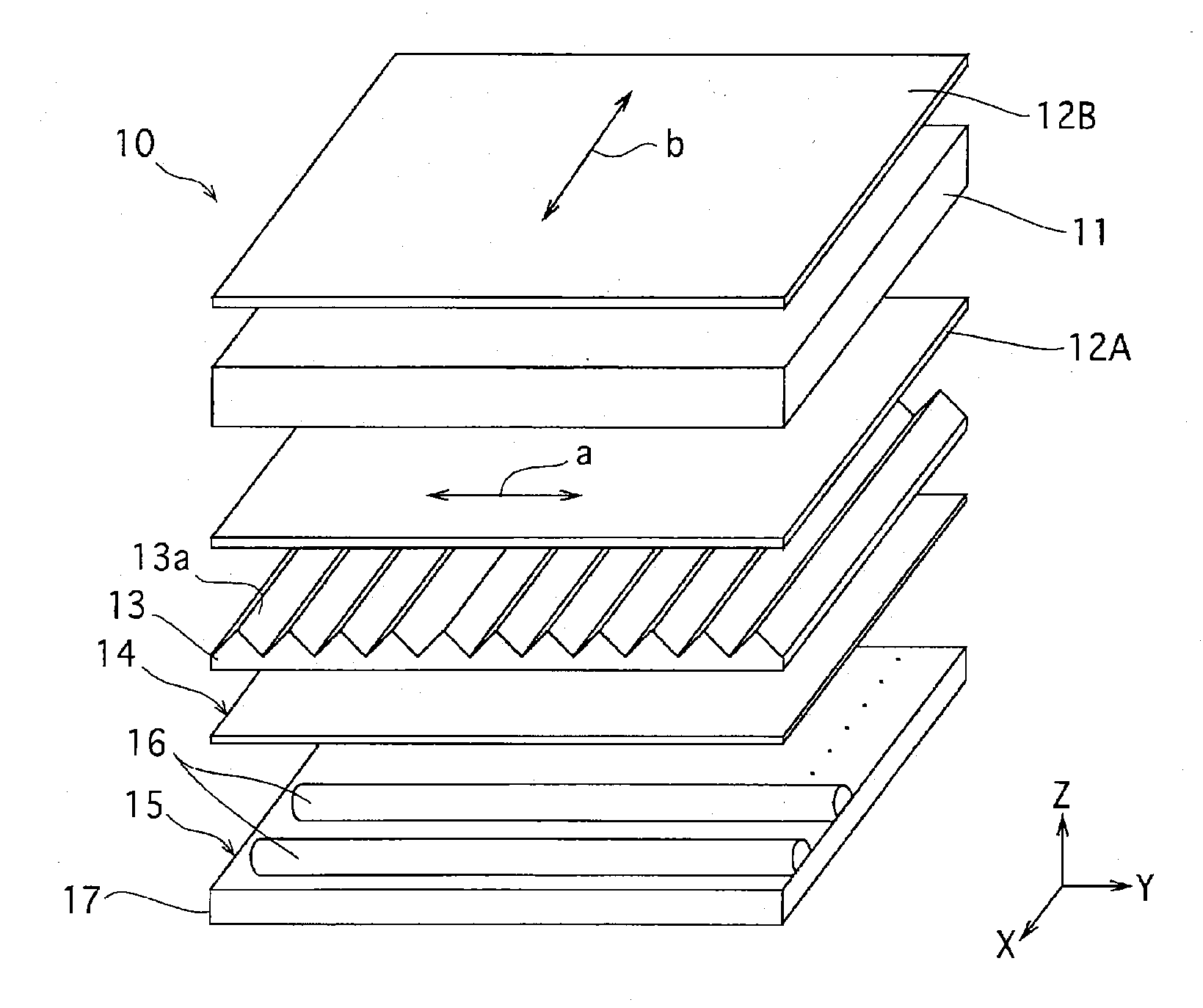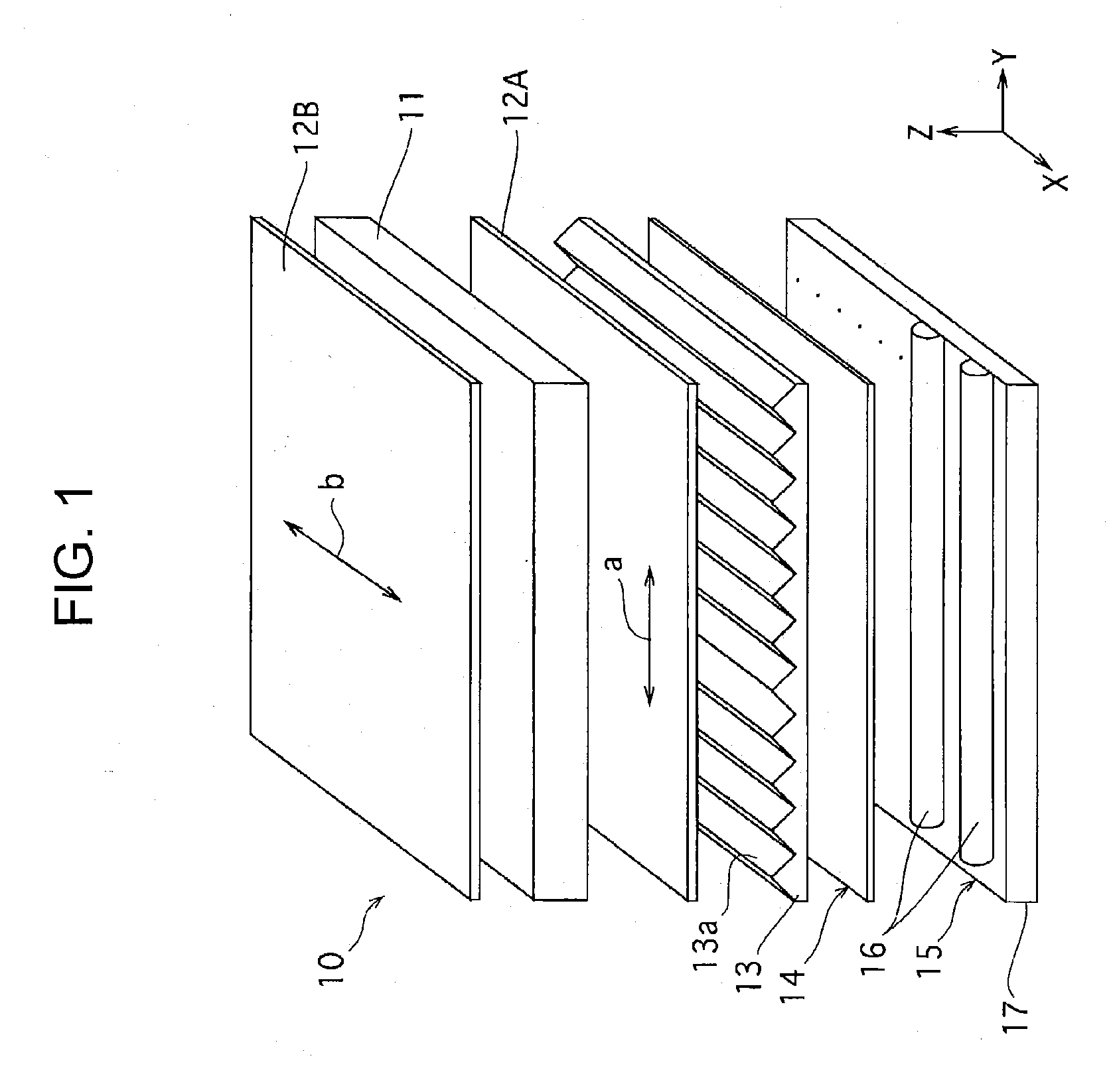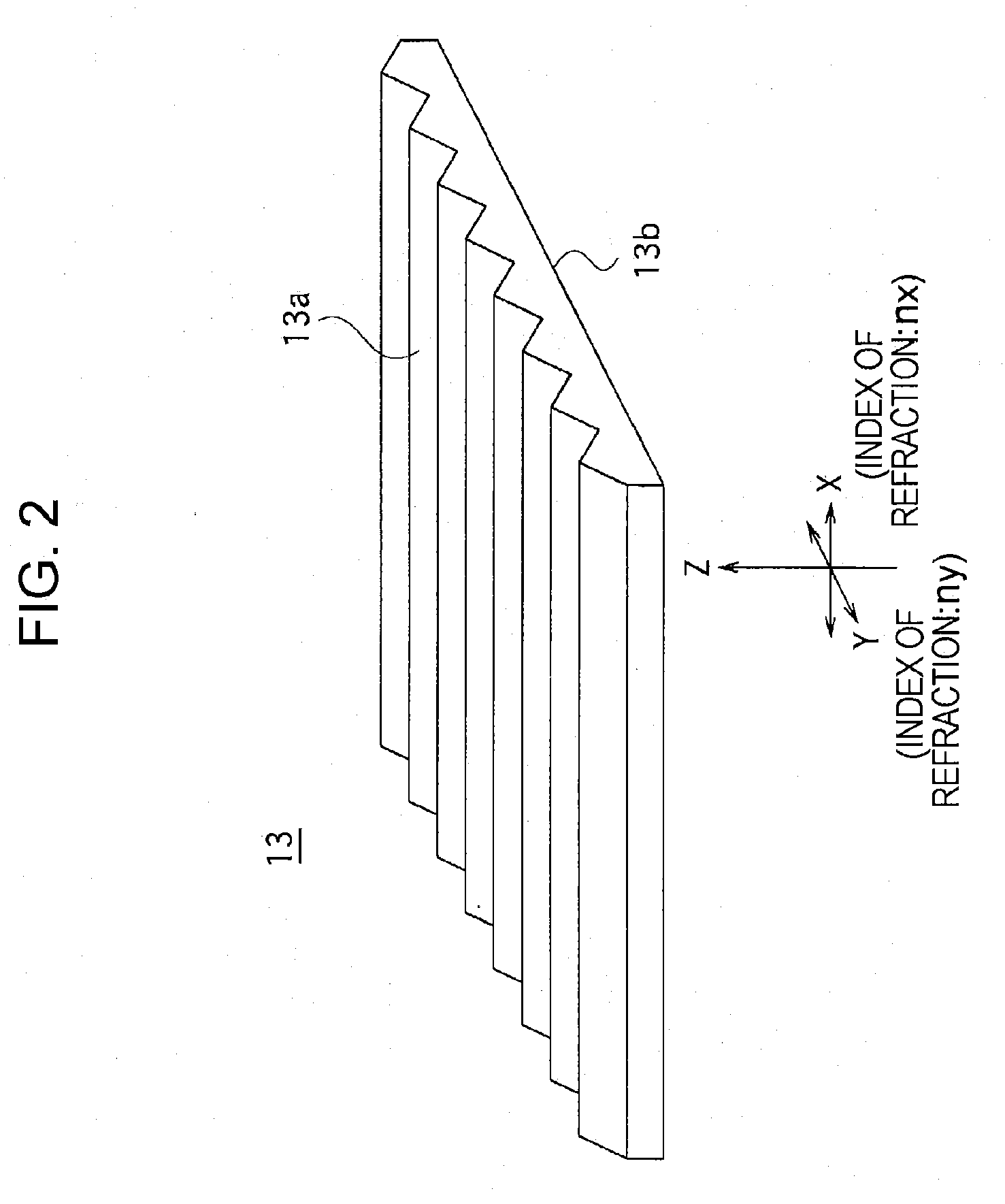Light-Transmitting Film, Method of Forming Light-Transmitting Film, and Liquid Crystal Display
- Summary
- Abstract
- Description
- Claims
- Application Information
AI Technical Summary
Benefits of technology
Problems solved by technology
Method used
Image
Examples
examples
[0076]Examples of the present invention will be described below. However, the present invention is not limited thereto. In the examples described below, in some cases, a prism sheet having refraction anisotropy according to the present invention may be referred to as an “anisotropic prism sheet.”
first example
Forming Prism Sheet
[0077]As an original metal embossed plate for hot press for transferring the prism shape to the resin film, a plate was used with surface engraved in a manner such that the cross-section includes right isosceles triangles, with apex angles of 90 degrees, regularly and continuously arranged adjacent and parallel to each other so that the distance between a projecting portion and an adjacent projecting portion and the distance between a concave portion and an adjacent projecting portion are both 50 μm. The resin film was thermoplastic resin, and a 200-μm thick amorphous PET (A-PET) sheet (NovaClear (trademark) SG007 manufactured by Mitsubishi Chemical Corporation, Tg approximately 70° C.) was used. This resin film was hot pressed at 100° C. for 10 minutes at 100 kgf / cm2 (9.8 Mpa), and immediately after pressing, ice water was added to obtain a transparent isotropic prism sheet.
[Stretching Prism Sheet]
[0078]The obtained isotropic prism sheet was cut into an 8 cm long...
second example
Forming Prism Sheet
[0091]As an original metal embossed plate for hot press for transferring the prism shape to the resin film, a plate was used with surface engraved in a manner such that the cross-section includes right isosceles triangles, with apex angles of 90 degrees, regularly and continuously arranged adjacent and parallel to each other so that the distance between a projecting portion and an adjacent projecting portion and the distance between a concave portion and an adjacent projecting portion are both 50 μm. The resin film was thermoplastic resin, and a 200-μm thick amorphous PEN (A-PEN) sheet (Tg approximately 120° C.) was used. This resin film was hot pressed at 150° C. for 10 minutes at 100 kgf / cm2 (9.8 Mpa), and immediately after pressing, ice water was added to obtain a transparent isotropic prism sheet.
[Stretching Prism Sheet]
[0092]The obtained isotropic prism sheet was cut into an 8 cm long (in the prism extension direction) and 5 cm wide rectangle. Then, the trian...
PUM
 Login to View More
Login to View More Abstract
Description
Claims
Application Information
 Login to View More
Login to View More - R&D
- Intellectual Property
- Life Sciences
- Materials
- Tech Scout
- Unparalleled Data Quality
- Higher Quality Content
- 60% Fewer Hallucinations
Browse by: Latest US Patents, China's latest patents, Technical Efficacy Thesaurus, Application Domain, Technology Topic, Popular Technical Reports.
© 2025 PatSnap. All rights reserved.Legal|Privacy policy|Modern Slavery Act Transparency Statement|Sitemap|About US| Contact US: help@patsnap.com



